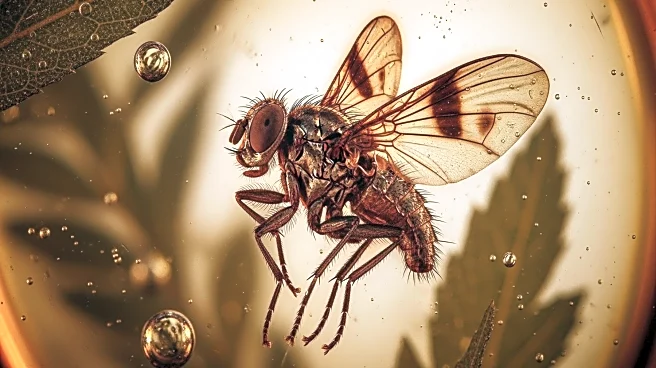What is the story about?
What's Happening?
A recent study has introduced a novel approach to bird sound recognition through the development of a multi-scale texture-aware model called DLoGNet. This model utilizes directional convolutional modules to enhance the accuracy of bird vocalization classification. The research, conducted using a dataset from Kaggle, focused on eight bird species, including Barn Swallow and Black Crowned Night Heron. The study employed advanced techniques such as the Laplacian of Gaussian function for edge enhancement and blob detection, and implemented the model using PyTorch on an NVIDIA RTX 4060 GPU. The DLoGNet model demonstrated superior performance in classification tasks compared to traditional methods, achieving high accuracy rates and effectively distinguishing between different bird species based on their vocal patterns.
Why It's Important?
The development of DLoGNet represents a significant advancement in the field of bioacoustic analysis, offering improved accuracy and efficiency in bird sound recognition. This has potential implications for ecological monitoring and conservation efforts, as accurate identification of bird species through vocalizations can aid in tracking biodiversity and assessing environmental health. The model's ability to handle complex acoustic patterns and its robustness against class imbalance make it a valuable tool for researchers and conservationists. Additionally, the use of advanced neural network architectures like DLoGNet could pave the way for further innovations in audio classification tasks beyond ornithology, impacting industries such as wildlife management and environmental science.
What's Next?
Future research may focus on expanding the dataset to include more bird species and further refining the model's architecture to enhance its performance. There is potential for collaboration with conservation organizations to apply this technology in real-world ecological monitoring projects. Additionally, the techniques developed in this study could be adapted for other bioacoustic applications, such as marine life monitoring or insect sound analysis. Researchers may also explore integrating DLoGNet with other sensory data to create comprehensive environmental assessment tools.
Beyond the Headlines
The study highlights the importance of interdisciplinary approaches in advancing technology for ecological purposes. By combining principles from computer science, biology, and environmental science, researchers can develop tools that not only improve scientific understanding but also contribute to conservation efforts. The ethical implications of using AI in wildlife monitoring, such as ensuring data privacy and minimizing human impact on natural habitats, are important considerations for future developments in this field.
AI Generated Content
Do you find this article useful?













